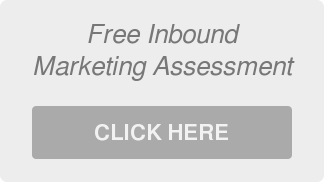 Ever noticed how some brands seem to know exactly what you want, even before you do? That’s not magic—that’s personalization marketing. By using data and insights, companies can create tailored experiences that resonate with individual customers. But how does it work, and why should your business care?
Ever noticed how some brands seem to know exactly what you want, even before you do? That’s not magic—that’s personalization marketing. By using data and insights, companies can create tailored experiences that resonate with individual customers. But how does it work, and why should your business care?
Why Personalization Matters
Companies that invest in personalization marketing see transformative results. Here’s why it’s so important:
1. Improves Customer Experience
Customers don’t just want choices; they want relevant choices. By leveraging personalization, businesses can curate recommendations, offers, and content that truly resonate with individual customers, providing a seamless and delightful experience.
2. Boosts Engagement Rates
Generic messaging often gets overlooked. Emails that have personalized subject lines generate 50% higher open rates, while customized content keeps readers engaged longer. By tailoring your message, you’re speaking directly to your audience's unique interests and needs.
3. Enhances Brand Loyalty
Loyalty is built on trust, and trust grows when customers feel valued. Personalization creates that connection. If a customer feels a brand understands who they are, they’re more likely to stick around for the long term.
4. Drives Revenue Growth
It’s no surprise that personalization leads to higher sales. According to Forbes, brands using advanced personalization can see revenue increases of up to 15%. When customers are guided toward the products they actually want, they’re more likely to make a purchase.
Essential Components Of Personalization Marketing
Before you jump into personalization, it’s important to understand the key elements that make it work. Here are the building blocks:
Data Collection
Personalization starts with gathering the right data. This includes both first-party (e.g., data from customer interactions with your site) and third-party data (e.g., behavioral data from external platforms). Common data points include:
- Purchase history
- Browsing behavior
- Demographic information
- Interests and preferences
Be transparent about the data you collect and ensure your privacy practices are compliant with regulations like GDPR or CCPA.
Segmentation
Not all customers are the same. Segmentation includes categorizing your audience into groups based on common traits, such as location, age, or buying behavior. This enables you to target each group more effectively. Example Segmentation:
- Frequent Buyers vs. First-Time Shoppers
- Value Shoppers vs. Luxury Seekers
- Urban vs. Suburban Customers
Dynamic Content
Dynamic content changes based on the user interacting with it. For example, an e-commerce homepage might showcase products a returning customer browsed during their last visit.
AI And Automation
Artificial intelligence and marketing automation tools are invaluable for scaling personalization efforts. Platforms like Salesforce, HubSpot, or Klaviyo can analyze large datasets, predict customer behavior, and deliver personalized content in real-time.
How To Implement Personalization Marketing In Your Strategy
Want to get started? Here’s a step-by-step guide to implementing personalization in your marketing efforts:
Step 1: Define Your Objectives
What do you want to accomplish with personalization? Whether it’s increasing email engagement, improving website conversions, or boosting customer retention, setting clear goals will steer your efforts.
Step 2: Gather And Analyze Data
Invest in tools that help track customer data and create detailed user profiles. Use information from analytics tools to understand how customers interact with your website.
Step 3: Segment Your Audience
Start with basic segmentation and refine it over time. For example:
- Demographics (age, gender, location)
- Customer Lifecycle Stages (prospects, active users, loyal buyers)
- Behavioral Triggers (abandoned cart, repeat visits, specific searches)
Step 4: Personalize Your Messaging
Tailor messaging across all customer touchpoints, such as:
- Personalized email subject lines
- Product recommendations based on browsing history
- Custom discounts for repeat shoppers
Step 5: Leverage Technology
Automation platforms and AI tools are your best allies in scaling personalized marketing campaigns. Platforms like Mailchimp, Marketo, or Outbrain can streamline data handling and campaign execution.
Step 6: Test And Optimize
Use A/B testing to refine your campaigns. Try different headlines, offers, or layouts to see what works best. Monitor metrics like conversion rates, click-through rates, and revenue to measure success.
Common Challenges In Personalization Marketing (And How To Overcome Them)
Privacy Concerns
With increasing emphasis on data privacy, customers are wary of how their information is used. Always prioritize transparency and secure data handling processes.
Managing Data
Handling huge amounts of data can be overwhelming. Use centralized data management platforms to ensure all your customer insights are organized and accessible.
Avoiding Generic Efforts
True personalization goes beyond adding someone’s name to an email. Avoid generic experiences by using multiple data touchpoints to refine your approach.
Are You Harnessing The Power Of Personalization?
Personalization marketing is no longer a luxury; it’s an expectation. By delivering tailored experiences, businesses can deepen relationships with customers, boost engagement, and ultimately grow revenue. Remember, the goal is to make every interaction feel relevant and meaningful. Because, at the end of the day, customers choose brands that understand them.





